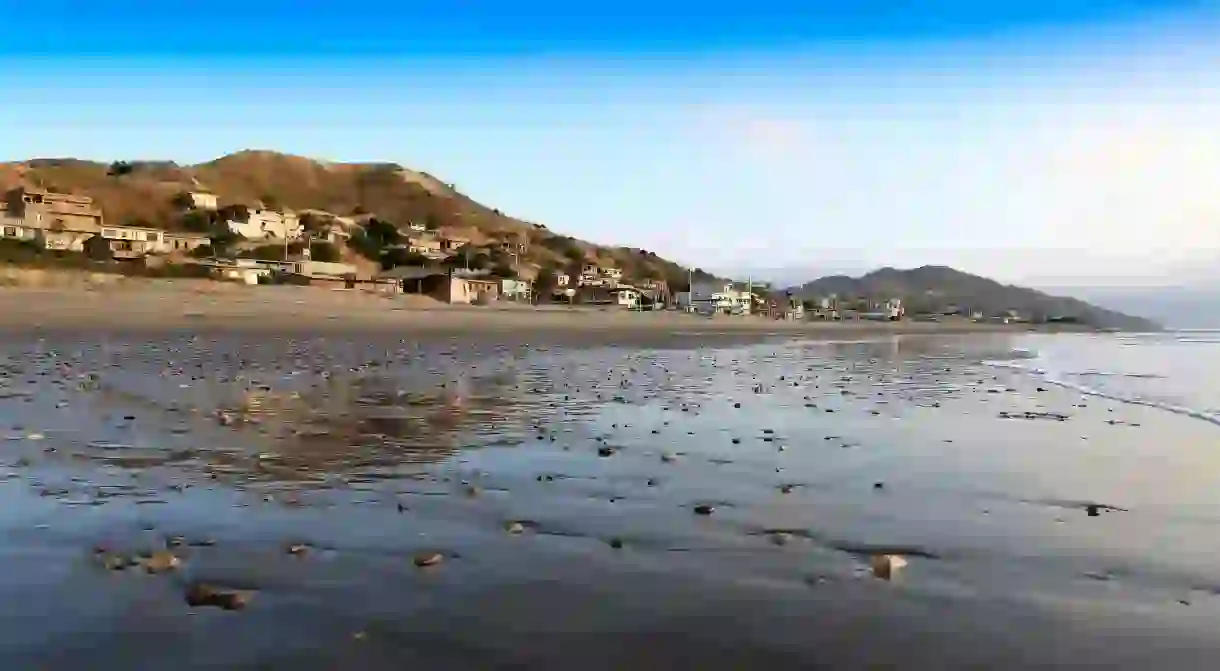The Top Things to Do in and Around Manta, Ecuador

Along the central Pacific Coast in Ecuador is Manta, a bustling town and the major fishing port of this small nation in South America. Go looking for wild howler monkeys in a nature reserve, learn about the Aztecs and Incas or hit the urban beaches – among the best in the country for learning how to kitesurf.
Go kitesurfing at Playa Santa Marianita
Natural Feature

Ride the waves at one of the best spots for kitesurfing in South America, Playa Santa Marianita. The Humboldt Current combined with hot and dry weather has created a micro-climate here, with a thermal wind that’s just right (especially between the end of May and December). You don’t need any experience to give this fast-moving sport a go; book a lesson with Ecuador Kitesurf to get started – its instructor is one of the best in the country.
Surf at Playa San Lorenzo
Natural Feature
This stretch of the Ecuadorian coast is prime surfing territory, too. A short distance from Manta, the Playa San Lorenzo is a quiet beach, making it a laid-back alternative to the crowds and thumping music at the many hot surfing destinations in Ecuador. With a slow, consistent break, the waves are great if you’re new to the sport or looking to hone your technique. Join the surf school Sur Pacifico Spanish School for 10 hours of surf lessons over a week.
Stroll the Malecón Escénico
Natural Feature, Architectural Landmark
At the heart of Manta is the Malecón Escénico, a boardwalk of colorful huts containing shops, restaurants and bars on the Playa Murciélago beachfront. Watch residents repairing fishing boats or setting sail to bring back the specialty around here: tuna. The fresh catches are then served in the restaurants in the area – sea to table in just a few steps. Most of the bars here also offer a happy hour in the late afternoon.
Buy an authentic Panama hat
Architectural Landmark

Drive inland for half an hour to reach Montecristi, home of the Panama hat. The incongruous name came from then-US president Theodore Roosevelt, who returned to the US with a straw hat after seeing them worn by Ecuadorians who were building the Panama Canal. The small town that made them then now trades off its fame, selling the iconic hats everywhere. The Modesto Hats store will help you choose the best style for your face and show you how to judge the quality of the weave.
Breakfast like a costeño
Restaurant, South American
To costeños (Ecuadorians born on the coast), the best meal of the day is breakfast. Favorites include dishes made from green plantains, such as bolon de verde (smashed green plantain dumplings stuffed with cheese and pork) and tigrillo (a green plantain scramble). However, to truly eat like a local, order the encebollado (a brothy soup made with tuna, spices and pickled red onions). Mom-and-pop restaurants make a huge pot early in the morning and serve it until it sells out – the Encebollados Wacho diner is one of the best.
Explore ancient artefacts
Museum
The archaeology museum at Cerro de Hojas-Jaboncillo features one of the best collections of the “seats of power,” large stones carved with a U-shaped seat, believed to be used by Manteño royalty. A 45-minute drive inland, on a dry and dusty hillside with views of the Pacific Ocean, Cerro de Hojas-Jaboncillo is both a museum and an active archaeological dig. The area held great political and cultural importance from 700-1530CE.
Catch a record-breaking marlin
Architectural Landmark

In 1985, Jorge “Pancho” Jurado caught one of the biggest blue marlins ever – weighing 1,014lb (460kg) – off the coast of Manta. Fancy a go yourself? Fishing in these mild waters is a year-round sport, but June through December offers the best opportunities for bites. Join custom fishing charter company Ecuagringo for a trip to catch marlin, wahoo, swordfish and grouper aboard captain Andrés Calero’s fast Miura 27ft sportfishing boat.
Dine like a Manabita
Restaurant, South American
To experience the best of Manta’s cuisine, head to Martinica Restaurant. Wooden tables, canary-yellow walls and lamps for lighting create a cozy ambience – and that’s before you’ve tried the delicious seafood. Make the most of the fish’s freshness with a tuna or salmon sashimi appetizer before asking the waiter to recommend one of the traditional mains. The roasted tuna with a peanut sauce and plantains or seafood (including octopus and crab claws) in a coconut sauce are both excellent options.
Observe howler monkeys in the wild
Natural Feature, Park

See howler and capuchin monkeys, armadillos, wild cats and hundreds of bird species at the Pacoche Lodge and Reserve, one of the last remaining semi-dry Ecuadorian forests. The reserve covers a 25-acre (10ha) area within the protected 33,223-acre (13,445ha) Pacoche Marine Coastal Wildlife Refuge. A guide will lead you around the forest in a small group tour for two hours, helping you spot the rustling of wildlife along the way.
Learn about pre-Columbian cultures
Museum
The Manta Cultural Center Museum covers the fascinating era of pre-Columbian culture in Ecuador. Although it’s small – you could zip around it in half an hour – you’ll get a great overview of Ecuadorian beginnings. Exhibits take you through the cultures that thrived here between 4200BCE and 1350CE, as well as the conquest, colonial periods and the 2016 earthquake. Telling the story are ancient Aztec and Inca artefacts, paintings, photographs and a subtitled video.













